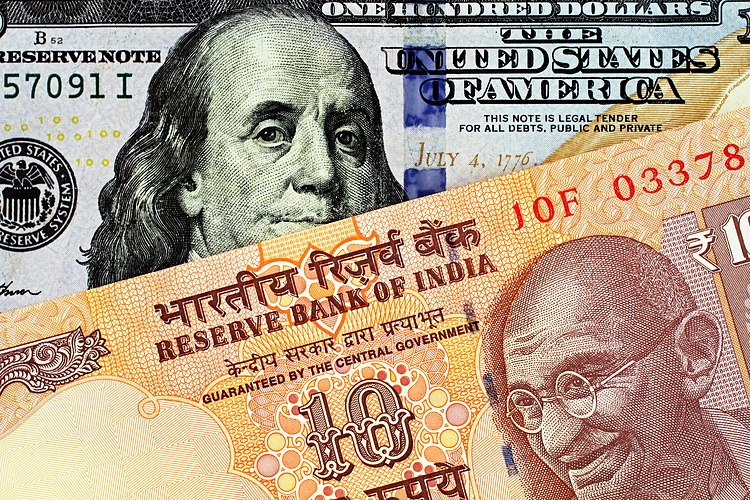- The Indian Rupee holds steady near a record low in Thursday’s Asian session.
- Equity outflows and persistent strength in the USD drag the INR lower.
- Investors await India’s October WPI Inflation on Thursday ahead of the US PPI data release.
The Indian Rupee (INR) flat lines near its all-time low on Thursday. The continued withdrawal of foreign funds, sluggishness in domestic stock markets, and a rally in the US Dollar Index (DXY) exert some selling pressure on the local currency.
Nonetheless, lower crude oil prices and the routine interventions by the Reserve Bank of India (RBI) might help limit the INR’s losses and keep volatility muted in the near term. Later on Thursday, investors will monitor India’s Wholesale Price Index (WPI) Inflation for October. On the US docket, the Producer Price Index (PPI) for October, weekly Initial Jobless Claims and Fedspeak will be the highlights later in the day.
Indian Rupee remains weaker amid foreign fund outflows and a strong US Dollar
- Overseas investors withdrew nearly $3 billion from Indian stocks in November, adding to the $11 billion of outflows in October. Indian equity indexes have fallen over 9% since their peak in late September.
- The US Consumer Price Index (CPI) rose by 2.6% YoY in October, in line with expectations, according to the US Department of Labor Statistics on Wednesday.
- The core CPI, which excludes the more volatile food and energy categories, climbed by 3.3% YoY in October, matching prior forecasts.
- Kansas Fed President Jeffrey Schmid stated on Wednesday that the Fed’s interest-rate cuts to date acknowledge its growing confidence that inflation is headed down but gave no steer on how many more rate cuts he feels may be appropriate, per Reuters.
- St. Louis Fed President Alberto Musalem noted on Wednesday that sticky inflation figures make it difficult for the US central bank to continue to ease rates.
- Dallas Fed President Lorie Logan said on Wednesday that the central bank should move slowly with additional rate cuts to avoid unintentionally stoking inflation.
USD/INR’s bullish outlook remains in play, but overbought conditions linger
The Indian Rupee trades flat on the day. The USD/INR pair holds above the key 100-day Exponential Moving Average (EMA) on the daily timeframe, suggesting the uptrend is more likely to resume than to reverse. However, further consolidation cannot be ruled out before positioning for any near-term USD/INR appreciation as the 14-day Relative Strength Index (RSI) exceeds 70, indicating an overbought condition.
The first upside barrier for USD/INR is seen at 84.50. Sustained trading above this level potentially takes the pair to the 85.00 psychological level and beyond.
On the flip side, the resistance-turned-support level at 84.32 acts as an initial support for the pair. A breach of the mentioned level could see a drop to the 84.05-84.10 region, representing the lower limit of the trend channel and the high of October 11. The next contention level to watch is 83.86, the 100-day EMA. A decisive break below this level could mark the start of a downtrend.
RBI FAQs
The role of the Reserve Bank of India (RBI), in its own words, is “..to maintain price stability while keeping in mind the objective of growth.” This involves maintaining the inflation rate at a stable 4% level primarily using the tool of interest rates. The RBI also maintains the exchange rate at a level that will not cause excess volatility and problems for exporters and importers, since India’s economy is heavily reliant on foreign trade, especially Oil.
The RBI formally meets at six bi-monthly meetings a year to discuss its monetary policy and, if necessary, adjust interest rates. When inflation is too high (above its 4% target), the RBI will normally raise interest rates to deter borrowing and spending, which can support the Rupee (INR). If inflation falls too far below target, the RBI might cut rates to encourage more lending, which can be negative for INR.
Due to the importance of trade to the economy, the Reserve Bank of India (RBI) actively intervenes in FX markets to maintain the exchange rate within a limited range. It does this to ensure Indian importers and exporters are not exposed to unnecessary currency risk during periods of FX volatility. The RBI buys and sells Rupees in the spot market at key levels, and uses derivatives to hedge its positions.
Read the full article here

